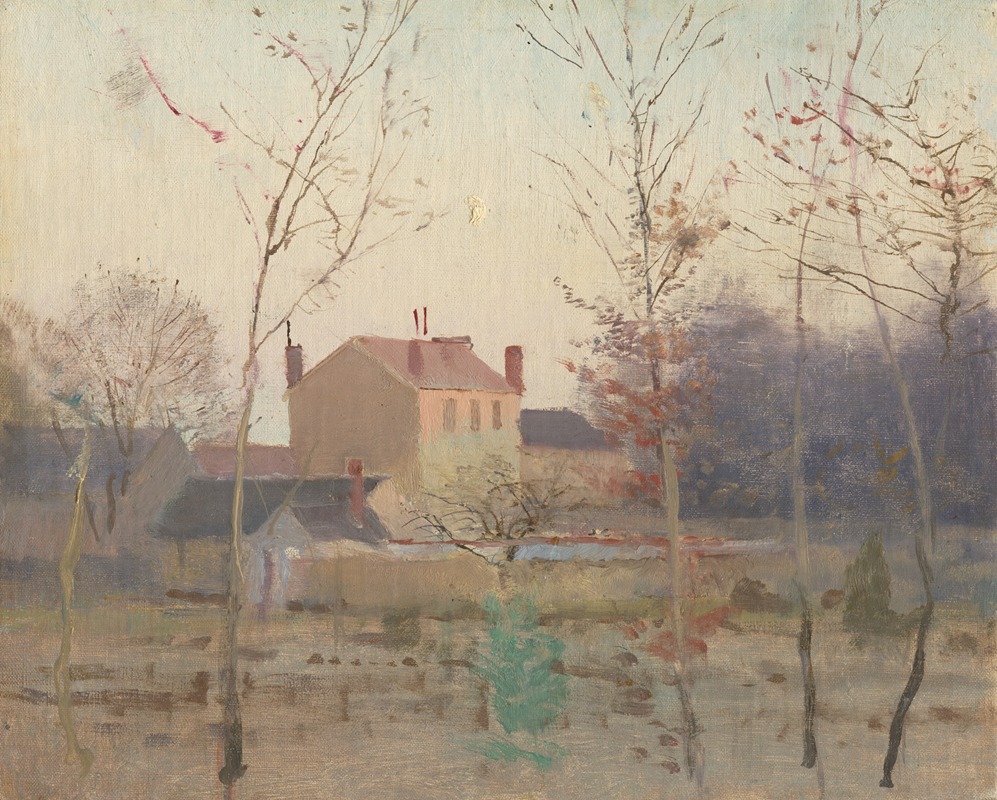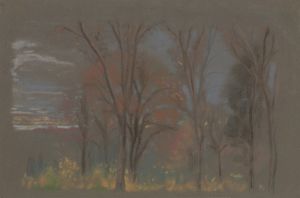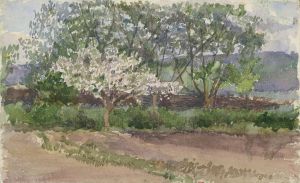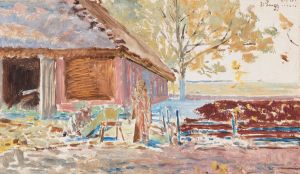
Autumn at the Edge of a City
A hand-painted replica of Ladislav Mednyánszky’s masterpiece Autumn at the Edge of a City, meticulously crafted by professional artists to capture the true essence of the original. Each piece is created with museum-quality canvas and rare mineral pigments, carefully painted by experienced artists with delicate brushstrokes and rich, layered colors to perfectly recreate the texture of the original artwork. Unlike machine-printed reproductions, this hand-painted version brings the painting to life, infused with the artist’s emotions and skill in every stroke. Whether for personal collection or home decoration, it instantly elevates the artistic atmosphere of any space.
Ladislav Mednyánszky, a prominent Slovak-Hungarian painter, is known for his evocative landscapes and poignant depictions of human figures. One of his notable works, "Autumn at the Edge of a City," exemplifies his mastery in capturing the transient beauty of nature and the subtle interplay between urban and rural environments. Mednyánszky's work is often characterized by its atmospheric quality and the artist's ability to convey mood through his use of color and light.
"Autumn at the Edge of a City" is a landscape painting that reflects Mednyánszky's deep appreciation for the natural world and his skill in rendering its ephemeral qualities. The painting likely depicts the outskirts of a city during the autumn season, a time when nature undergoes a dramatic transformation. The artist's choice of subject matter suggests a contemplation of the changing seasons and the passage of time, themes that are recurrent in his body of work.
Mednyánszky's technique in this painting is indicative of his broader style, which often includes a muted color palette and a focus on atmospheric effects. The use of soft, diffused light in "Autumn at the Edge of a City" creates a sense of tranquility and introspection. This approach allows the viewer to experience the quiet beauty of the scene, as well as the subtle tension between the encroaching city and the natural landscape.
The composition of the painting is carefully balanced, with the cityscape in the background providing a contrast to the more organic forms of the trees and foliage in the foreground. This juxtaposition highlights Mednyánszky's interest in the relationship between human civilization and the natural world. The painting invites viewers to reflect on the impact of urbanization on nature, a theme that remains relevant in contemporary discourse.
Mednyánszky's work is often associated with the Symbolist movement, and "Autumn at the Edge of a City" can be seen as an exploration of symbolic themes such as decay, renewal, and the passage of time. The autumnal setting, with its rich tapestry of colors and textures, serves as a metaphor for these broader existential themes. The painting's mood is contemplative, encouraging viewers to ponder their own relationship with nature and the inevitable changes that come with time.
Ladislav Mednyánszky's contributions to art extend beyond his technical prowess; his works are imbued with a deep philosophical inquiry into the human condition and our place within the natural world. "Autumn at the Edge of a City" is a testament to his ability to capture the essence of a moment and to evoke a sense of wonder and introspection in those who view his art.
Overall, "Autumn at the Edge of a City" is a significant work within Mednyánszky's oeuvre, showcasing his unique ability to blend realism with a profound sense of mystery and emotion. The painting remains an enduring example of his artistic vision and continues to resonate with audiences today, offering a glimpse into the timeless beauty of the natural world as seen through the eyes of a master painter.


















